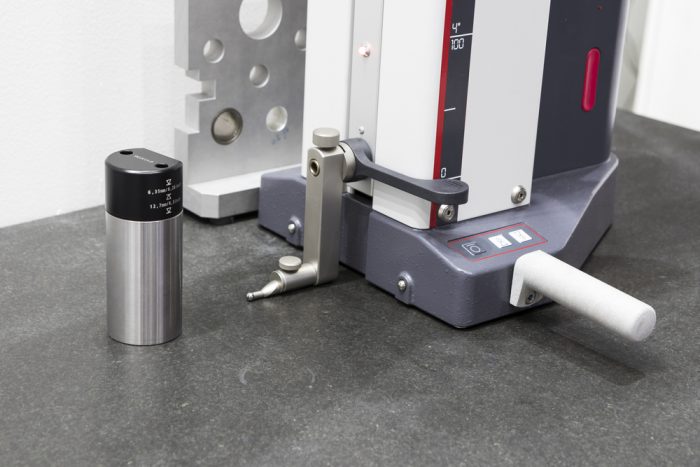Technicians may encounter some challenges when using larger height gages. The cause of those potential problems is not due to the height of the gage but its relationship to the size of the base. If there are errors in how the gage is set up, it can potentially distort a carefully planned height measurement procedure; that said, what can you do to get perfect measurements for every job and overcome said height gage challenges?
Keep and Use a Well-Maintained Surface Plate
A majority of height gages are typically used with surface plates. These surface plates are designed to provide the reference for both the height gage and the part that’s being measured. It is imperative that these plates are well-maintained and clean. When measuring a workpiece that has a height of approximately 10 inches, a strand of hair or a small metal chip is enough to throw off one’s measurements by 0.020 inches.
In addition to minute dirt and debris, the surface of the granite plate also plays a major role in performance of the height gage. The slightest imperfections can be amplified if the surface between the workpiece and height gage is not smooth enough, is uneven, etc. This may cause problems if the measurement gets higher. Here’s a quick scenario:
- The surface plate of your height gage has a flatness spec of 50 microinches
- The base has a length of six inches
- Imperfections on the granite plate’s surface can cause a 50-microinch error to grow over 0.0003 inches
Lengthen and Widen the Base
A height gage is designed to measure a specific height. That’s the point where it performs at its best. If the height gage model you are using is designed to measure 24 inches, you can’t simply extend the post to measure a part that’s three times that height. If the cross area of the measuring post or base design is not modified, the gage can start to flex and/or wobble, affecting the final measurement. Oftentimes, it is hard to spot if these problems are occurring at that moment. For example, a 0.001-inch wobble is invisible to the naked eye.
To prevent the post from flexing or wobbling, some technicians may focus on “strengthening” the column of the height gage. Unfortunately, this is not a viable solution for resolving the problem. If pressure is applied to the measuring contact when it’s nearing the maximum upper position, the gage may tip over. If the same amount of pressure is applied horizontally against the gage’s measuring contact, the gage may start sliding along the table.
The correct way is to focus on decreasing the ratio of the base to the post. One can achieve this by making the base wider and longer. In addition, build in some mass. By doing this, one can expect to see significant improvements in the height gage’s performance.
Looking for a reliable height gage? At Willrich Precision, you can purchase high-performance height gages online at the best prices. Feel free to contact us if you have any inquiries.





